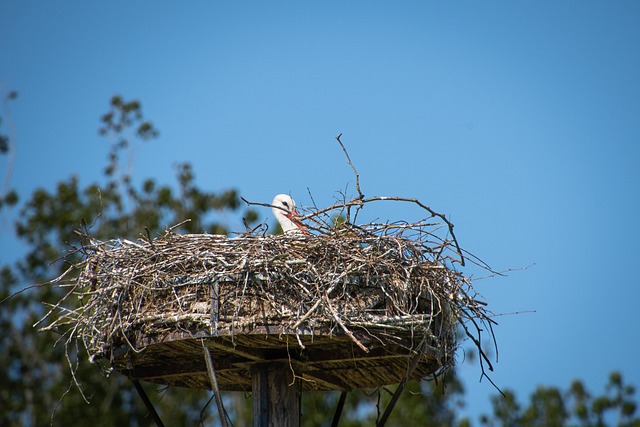Birds can enhance landscapes, but uncontrolled populations cause property damage. This text offers a guide to understanding why birds gather, focusing on food, water, and shelter. It promotes eco-friendly bird control solutions that use natural repellents, reflective objects, and landscaping to deter birds without harming them or the environment. By implementing these sustainable practices, property owners can achieve a harmonious balance with local wildlife.
“Tired of sharing your space with unwelcome feathered visitors? Discover professional advice on reducing bird attractants around properties. This comprehensive guide explores common sources of attraction and their impact, offering a range of eco-friendly strategies for deterring birds non-harmfully. From understanding avian behavior to implementing effective, long-term eco-friendly bird control solutions, we provide tips for maintaining a balanced approach with your avian neighbors.”
Understanding Bird Attractants: Common Sources and Their Impact
Birds can be a delightful part of any landscape, but they can also cause property damage and pose health risks when their populations grow too large. Understanding what attracts birds is the first step in implementing effective eco-friendly bird control solutions. Common sources of attraction include food, water, and shelter.
Food attractants are perhaps the most obvious, ranging from discarded garbage to bird feeders. Even well-intentioned feeding stations can encourage excessive bird populations, leading to droppings that can transmit diseases like salmonella. Water sources, such as birdbaths or standing puddles, also draw birds, especially during dry periods. Lastly, buildings and structures provide ample shelter, with crevices, ledges, and even illuminated windows acting as ideal nesting sites. By identifying and addressing these attractants, property owners can significantly reduce bird activity while promoting the use of safe, eco-friendly bird control methods.
Eco-Friendly Strategies for Deterring Birds Non-Harmfully
Many traditional methods of bird control involve harmful chemicals or noise, which can be detrimental to the environment and other wildlife. Fortunately, there are numerous eco-friendly strategies that property owners can employ to deter birds non-harmfully. One effective approach is to utilize natural repellents such as citrus oils or capsaicin, derived from chili peppers, which have been proven to repel birds without causing them any harm. Another method is to install reflective objects like CD strips or aluminum tape near problem areas, as birds find these materials disorienting.
Moreover, landscaping can play a significant role in bird control. By removing potential food sources and nesting sites, such as fruit trees or dense vegetation, you can make your property less appealing to birds. Instead of using toxic chemicals to kill insects, consider implementing organic pest control methods that are safe for both the environment and local wildlife. Additionally, regular cleaning of areas where birds might gather, like bird feeders or roof gutters, will help prevent them from making your property their home.
Implementing Effective, Long-Term Bird Control Solutions
Implementing effective, long-term bird control solutions is a crucial step in reducing bird attractants around properties. Opting for eco-friendly methods can significantly benefit both your surroundings and local wildlife. These solutions not only deter birds but also minimize environmental impact by avoiding harmful chemicals or traps. Natural repellents like specific scents, visual deterrents such as reflective objects, and structural modifications to limit nesting areas are some of the sustainable options available.
By integrating these eco-friendly bird control strategies, property owners can achieve a balance between maintaining their spaces and preserving the natural environment. Regular maintenance and adaptation of these methods according to seasonal changes ensure continuous protection against bird attractants, creating a harmonious coexistence with local avian species.
Maintaining a Balanced Approach: Coexistence with Avian Neighbors
Maintaining a harmonious relationship with your feathered neighbors is key when implementing bird control measures. Coexistence doesn’t mean tolerating unwanted guests; instead, it’s about finding an eco-friendly balance. Many traditional methods focus on repelling birds, but these can be harmful to other wildlife and the environment. Opting for eco-friendly bird control solutions not only reduces the impact on local ecosystems but also ensures your property remains a haven for both humans and wildlife in harmony.
Consider using natural deterrents like predator scent sprays or visual intimidators like reflective objects, which can discourage birds without causing them harm. These methods respect the role birds play in our ecosystem while helping to mitigate issues caused by overpopulation or unwanted behavior. By embracing these sustainable practices, you contribute to a healthier environment and foster a peaceful coexistence with your avian neighbors.
In conclusion, reducing bird attractants around properties is a multifaceted approach that requires understanding common sources of attraction and adopting both immediate and long-term strategies. By implementing eco-friendly bird control solutions, such as non-toxic repellents, physical barriers, and habitat modification, property owners can effectively deter birds without causing harm. Maintaining a balanced approach that respects the coexistence with avian neighbors is not only humane but also aesthetically pleasing and environmentally responsible. Embracing these methods contributes to a harmonious relationship between humans and nature in today’s digital era.
